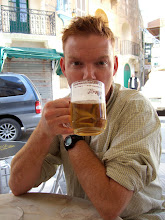EPEC workshop 2 November
Notes from a workshop held in November at Melbourne’s Monash University.
Giron J.
Giron gave a talk on the pili of E. coli. LIF acts as an adhesin in this bacterium and other factors include YAGZ which was renamed ECP (E. coli common pili).
Other factors involved in the attachment are Curli which may be more important in biofilm formation and survival in the environment rather than attachment to the host. A further factor identified was YEHD.
Torres A. Atypical E. coli
Atypical E. coli are defined as E. coli that do not have the EAF plasmid and are BFP negative. They express 3 adherence patterns and 14 serotypes.
Control of these is difficult however there is increased interest in the traditional remedies in the mouse model Artemisia spp (One of the wormwoods) was shown to reduce carriage) though specific components/proteins have yet to be isolated.
Fernando N.G.
EspC is secreted into the cytoplasm of the host cells. The delivery appears to be by both type V and type III secretory mechanisms. The protein is initially secreted into the ECF by a type V mechanism and the LEE encoded mechanism allows insertion into the cell.
Once in the cell EspC causes cytoskeletal damage. Histologically this appears as cell rounding and detachment. The molecular pathogenesis appears to be related o its ability to its ability to cleave sectrin. Ability it shares with the host proteins Caspase 3 and Calpain. FAK can also be cleaved which causes its dephosphorylation, although this requires the whole bacterial cell to occur.
Baldie P
Type II secretion pathway exists in the bacterium and this functions to secrete virulence factors including a lipoprotein.
Boedeker E.
Rabbit model of EPEC used to study the response to mutants. This demonstrated that deleting intimin and LER was protective. There was no antibody response to these and this did not require antibody factors.
Finlay B.B. C Rodentium of the mouse, a model for EPEC.
This group has been using the natural infection model of the mouse with C Rodentium as a model for the infection in humans. The rational being that it is genetically very similar to EPEC and is a natural infection of mice with easily measured effects on the gut (for example hyperplasia of the intestine).
A competitive index can be used to measure the ability of mutants to colonise and cause disease. Essentially putting equal amounts of the mutants in the mouse and comparing amounts recovered, a 1:1 ratio would suggest the mutant makes no difference. In this way the Mutants NLeb and ∆ENT were shown to reduce hyperplasia.
The hyperplasia caused by C. Rodentium is T cell mediated however B-cell mediated immunity is required for bacterial clearance.
EspF is shown in this model as with EPEC to cause tight junction disruption however whether this had an effect on the hyperplasia is unknown.
Sperandio V.
Abl, Erk and Src kinase families are localised to the pedestal formation in EPEC pathogenesis. These may be redundant in their function. Abl1 and2 and Erk have been shown to be redundant. Src and yes Family kinases are not redundant.
TIR is bound by the SH3 domain of kinases and mutation of this domain removes the pedestal formation activity of TIR. Phosphorylation of TIR is not sufficient allow pedestal formation.
Frankel G TccPm
TccPm may be renamed TccP2
EspF is involved in the elongation of the brush border effacement.
The last talk of the day and I am afraid I couldn’t get clear understanding of the point the speaker was trying to make. Thankfully I was not the only one, as I gathered from the pub afterwards.





